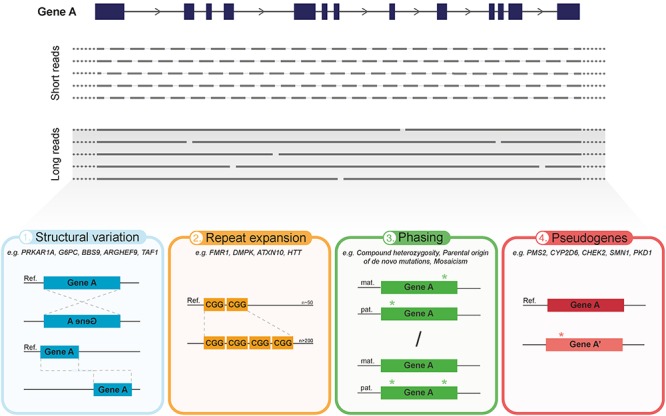Figure 1.

Overview of the main advantages of current long-read sequencing (LRS) approaches in medical genetics. The predominant difference between LRS and the conventional SR-NGS approaches is the significant increase in read length. In contrast to short reads (150–300 bp), LRS has the capacity to sequence on average over 10 kb in one single read, thereby requiring less reads to cover the same gene (illustrated in top panel). Hence, aside from reducing alignment and mapping errors, LRS holds various advantages over short-read approaches which can greatly impact medical genetics (bottom panel). (1) Improved detection and characterization of large structural variation (SV), due to, e.g., large inversions or translocations. (2) Capacity to directly, and with that more accurately, sequence over long tandem repeat expansions and extreme GC-rich regions. (3) Enhanced phasing, i.e., assignment of genetic variants to the homologous paternal or maternal chromosomes, to determine inheritance patterns, parental origin of de novo events, mosaicism, allele specific expression and disease risk haplotypes. (4) Improved discrimination of clinically relevant genes from their pseudogenes.
